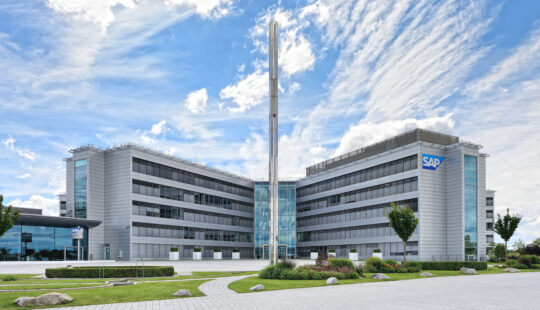As someone who has lived and worked around the world, including Asia, Europe, and the U.S., I have had the opportunity to see a range of cultural differences and diverse perspectives. Early on, this convinced me of the necessity of building a diverse workplace and has since become such an elemental foundation to how I lead at SAP.
At the same time, the experience of working abroad gave me a taste of what it felt like to be an outsider in some of the countries where I resided. This raised my awareness of the importance of creating a workplace that values inclusivity at its core.
Diversity and inclusion (D&I) has long been something that corporations have been striving for across their employee base and leadership teams. It has now become more important than ever for leaders to truly define what D&I means and actively drive toward it, where it becomes part of the fabric of the company rather than an add-on.
It Starts with Communication
The way to understand what diversity is and what it means to an organization is by talking about it. These conversations cannot happen behind closed doors, but rather in an open forum where all members of an organization can exchange their unique thoughts and perspectives. You never know where the next best idea may come from. This is especially important in a global, multi-national corporation that spans geographies and languages.
Effective communication within this realm all starts with understanding and respecting different cultures and perspectives by being conscious of how you communicate. Leaders must be considerate when communicating to help ensure the way they phrase thoughts will not offend people – whether talking to people of a different gender, race, nationality, or generation.
Communication also goes beyond SAP’s internal walls and spills out into the way we interact with customers. SAP is very aware that customers in different countries prefer different methods of communication and is also particular about its communications and choice of words. Within a real-time support environment, the company constantly evolves its practices based on the feedback received from support representatives about the level of support provided to various customers around the world.
Embracing All Perspectives
Talking about D&I may be the first step, but a leader must truly embrace it to affect progress within a team and the larger organization. Once you start to embrace D&I and truly live it, there is no going back. When you are put in circumstances or faced with situations that are clearly lacking diverse thought or input, you may begin to feel uncomfortable. While there is no one way to enact D&I within an organization, leaning into this discomfort to figure out the path forward is where the true answers lie.
First is leading by example. This starts with diversifying a leadership team. Approximately half my team is made up of women. And while I do not believe I am ticking any boxes, I know that this helps set a good example for the rest of the organization.
Beyond gender diversity, it is important to embrace and integrate young talent within a team. Generational differences within teams can lend new perspectives to tacking problems and managing projects. SAP has built its Technical Core Competence (TCC) team on power couples – experienced senior architects coupled with less-experienced early talents – supporting different areas with functional and technical expertise. This unique coupling allows for knowledge transfer, collaboration, and joint accountability across projects and has proven to be very successful. Young talents bring in fresh perspective and skills as well as the willingness to question existing procedures and processes, elevating the team to new levels of performance.
The right mix of people across age, gender, experience level, and culture will ultimately create well performing teams that can achieve much more. A diverse and inclusive team that works together will result in much better decision-making that will stand the test of time and require less change management in the future.
Creating Opportunity for D&I Early
It is important that the D&I scope goes beyond just talking about the numbers or quotas that need to be filled in order to be technically labeled “diverse.” Diversity can only be realized at the practical level, with continuous engagement and constant re-evaluation of the processes and initiatives in place that help encourage D&I. This starts at the very beginning with how we define ourselves and our organization to talent looking to enter the job market.
For me, diversity starts at the early talent level. Something as minute as job descriptions can have a long-lasting impact on the overall diversity of a company and its leadership. To afford all employees the opportunity to grow and move up requires making sure they are being given the chance from the very beginning. Hiring the best talent from the get-go, regardless of gender, age, or race, will naturally create a great pool for management positions down the road. It is important to foster this type of environment where the criteria are very clear, and expectations are set around hiring the right blend of diverse talent.
Truly making progress toward D&I within a team and organization requires self-reflection — taking a look at what has been done, what has been successful and what has not, and making the necessary changes. Diversity and inclusion does not start and stop, and will never be fully achieved; it is something that constantly and consciously needs to be evolved and improved upon.
I encourage you to face a new reality to do things differently, and I hope that this brings about great change and success within your organization.
Andreas Heckmann is the executive vice president of Product Engineering and head of Customer Solution Support and Innovation at SAP.



